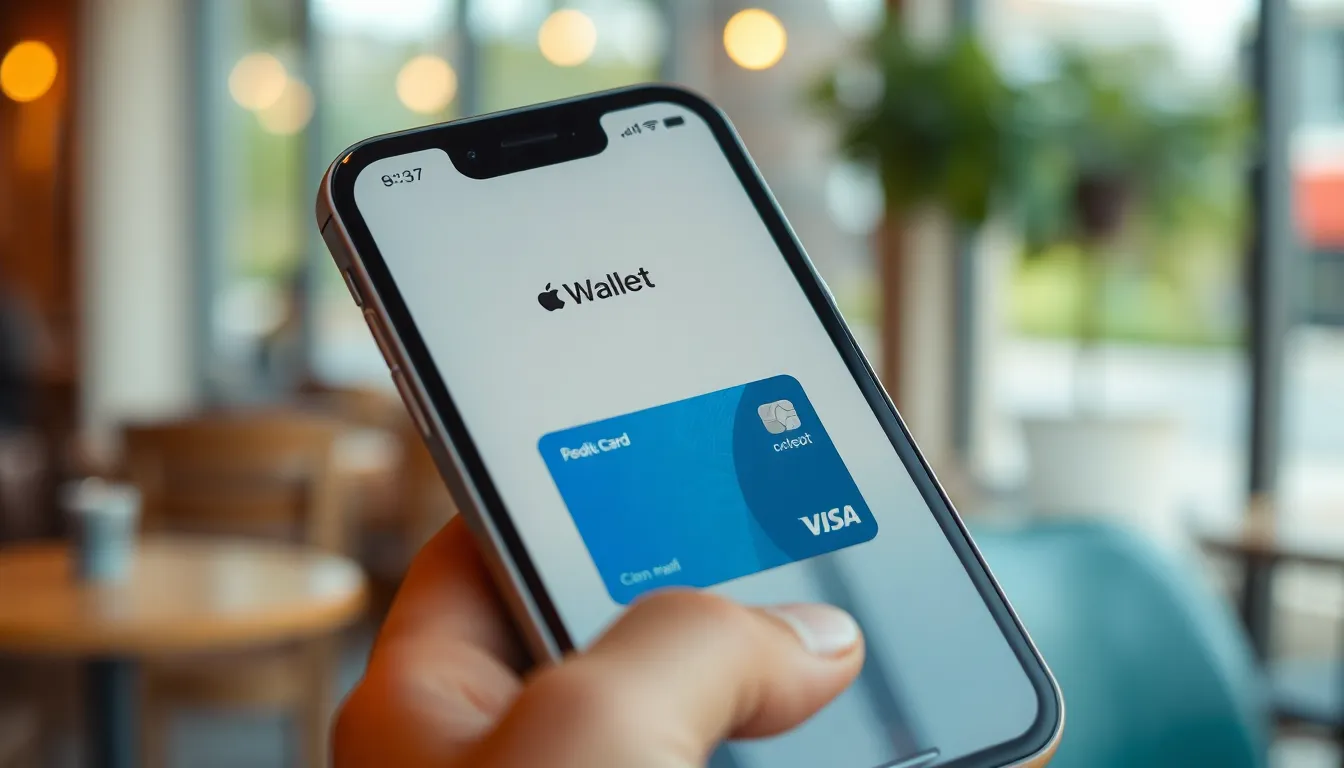Table of Contents
ToggleIn a world where convenience reigns supreme, who wouldn’t want to pay for their morning coffee with just a tap? The iPhone’s tap-to-pay feature transforms your device into a digital wallet, making transactions as easy as a flick of the wrist. Forget fumbling for cash or swiping cards—this is the future of payments, and it’s here to save the day.
Understanding Tap to Pay
Tap to pay transforms an iPhone into a convenient digital wallet. Users benefit from this technology by making secure transactions without physical cash or cards. Compatibility with near-field communication (NFC) is essential for enabling this feature. Many retailers now support tap-to-pay, making everyday purchases seamless.
Security remains a top priority. Each payment uses encryption and tokenization to protect sensitive information. Apple Pay, the primary service for tap to pay, requires authentication like Face ID, Touch ID, or a passcode for added safety. Shoppers can trust their financial data remains secure during transactions.
Setting up tap to pay involves a few straightforward steps. Users first need to add credit or debit cards to their Apple Wallet. After this, enabling the tap-to-pay feature typically involves adjusting settings within the Wallet app. Activation occurs by selecting the card to use and authorizing it with Face ID, Touch ID, or passcode.
Enhanced user experience stands out as a primary advantage. Transactions occur in seconds, allowing quick checkouts even while carrying bags. Integration with loyalty programs means users can earn rewards while enjoying the efficiency of tap-to-pay.
Adoption of tap to pay continues to grow, with more businesses recognizing the user-friendly nature of this payment method. Going forward, users can expect more enhancements that enhance the convenience and speed of in-store purchases.
Setting Up Apple Pay

Setting up Apple Pay is a quick and easy process. Users can start enjoying tap-to-pay features right after adding a payment method to their Apple Wallet.
Adding a Payment Method
To begin, open the Wallet app on the iPhone. Tap the plus sign to start adding a new card. Users can either scan their card using the camera or enter the card details manually. It’s important to enter accurate information for seamless transactions. Credit and debit cards from major banks are accepted. After inputting the card information, follow the on-screen instructions to link the card with Apple Pay. Once completed, the card appears in the Wallet app, making it accessible for future purchases.
Verifying Your Information
Verification of the payment method is essential for security. After adding a card, the bank or card issuer may require additional steps for verification. Users might receive a text or email with a one-time code they need to enter. Prompt completion of this verification ensures that the card can be used with Apple Pay. If any issues arise, contacting the card issuer provides clarification and resolves the problem. Having verified cards increases the confidence users have when making tap-to-pay purchases.
Turning On Tap to Pay
Activating the tap-to-pay feature on an iPhone requires a few simple steps. Once configured, users can pay conveniently, transforming their devices into digital wallets.
Accessing Wallet Settings
Open the Wallet app to begin. Tap on the three-dot icon in the top right corner to find wallet settings. From this menu, select “Payment Cards.” This allows users to manage existing cards and add new ones. It’s essential to ensure all the payment options appear for a seamless experience. Regularly checking this section keeps everything organized. Maintaining an updated list of cards enhances the ease of making transactions.
Enabling Tap to Pay Feature
Locate the ‘Apple Pay’ option within the settings. Toggle the switch to enable the tap-to-pay feature. After activation, review the payment cards linked; these are the ones used for tap transactions. Users must verify that the card is supported by Apple Pay for effective payments. Testing the feature at a retailer that accepts tap-to-pay helps confirm readiness. Once activated, the feature works effortlessly during transactions, maximizing convenience at checkout.
Troubleshooting Common Issues
Users may encounter issues while using the tap-to-pay feature on their iPhone. Identifying solutions to common problems ensures a smoother experience.
Payment Failure Solutions
Payment failures often occur due to expired cards or insufficient funds. Verify that linked cards are active and have sufficient balances. Sometimes a device restart resolves temporary glitches. Users can also check their internet connection, as a weak signal may inhibit transaction processing. If the issue persists, removing and re-adding the payment method to the Wallet app often helps. Finally, contacting the card issuer can clarify any restrictions that may impact functionality.
Compatibility Checks
Not all retailers support tap-to-pay. Confirm that the retailer accepts Apple Pay before attempting a transaction. Additionally, NFC functionality must be active on the iPhone device. Users should ensure their iPhone runs the latest software version to benefit from all features. Checking the settings for Apple Pay is also essential to ensure the feature is enabled properly. If problems continue, testing tap-to-pay at a different location can help determine if the issue is device-related.
Embracing the tap-to-pay feature on an iPhone not only streamlines everyday transactions but also enhances security with advanced technology. Users can enjoy quick and convenient payments while keeping their financial information safe. By following the straightforward setup process and ensuring their payment methods are verified, they can take full advantage of this modern payment solution. As more retailers adopt this feature, the ease of shopping will continue to improve, making tap-to-pay an essential tool for today’s digital lifestyle. With a few simple steps, users can transform their iPhones into powerful digital wallets, ready for any purchase.




